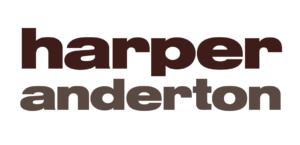Established in 2002, Exchange Street was named after the street at the heart of the commercial centre of Manchester, offering specialist finance and insurance recruitment to clients across the globe.
While the agency boasts a range of expert recruiters, its CRM and data storage and management were holding it back. We recently spoke to Andy Taylor, Director of Exchange Street, to delve into its recent switch to JobAdder and the detail-oriented data migration and implementation that he said was first-class, smooth and quick.
Switching from slow and clunky
“We’ve been going for around 20 years and when you get 20 years of data, it’s so vast and so difficult to keep track of,” explains Andy. “If you don’t start to get into good habits and laying things down, then this data, information and knowledge is just in people’s heads, and that becomes a threat to the business. It makes it very difficult to train. It makes it difficult to look after people’s work if they’re not around. It becomes quite burdensome.”
“You’re restricted in what you can do and you’re always worried about what you’ll do if people need to leave for a period of time, because things happen in life. What would we do? How would we cope? That’s why with recruitment CRM systems, you pile so much data into it, but then you don’t always have the resources to keep on top of it. So you have the past six months in order, but everything else behind that is way out of order.”
Andy says things came to a head when new users started to experience their old CRM. “We had a traditional CRM system, one that has been around for many years. As I was using it day in and day out, I just got used to it. A few other people started to use it who hadn’t previously used it all that much and they were like, “this is so slow, it’s so clunky.” It was serviceable. But compared to some other technology we use, like SourceBreaker or LinkedIn, it just felt really old-fashioned. It basically became the type of CRM system that all recruiters hate.”
“Most recruiters don’t like administration, they certainly don’t like using CRM systems and it became a barrier. It became the type of system that people didn’t want to use because it was a pain, it was slow and clunky. So for us, it was a case of we need to find some recruitment software that’s more modern, that’s slicker, that can just save us a huge amount of time, which is where JobAdder as a suggestion came in.”
Word of mouth led Exchange Street to JobAdder
The Exchange Street team knew that they needed to make a big change. As they conducted the search process for a new CRM, they received consistent recommendations for JobAdder’s ATS and CRM.
“I think we were quite clear about what we were looking for, which was ease of use, simplicity and something that recruiters who traditionally have been averse to using CRM systems would want to use because it would make their life easier. We did our due diligence and started asking around, we spoke to our marketing company, and they only work with recruiters. We asked, what are you hearing back from all the different recruitment firms, what works well and what doesn’t? We also asked the person who designed our website, he builds his own websites rather than using WordPress, so from a technical and usability perspective, he knows his stuff.”
“I’m also part of a couple of WhatsApp groups with recruiters around the globe and I asked what people would recommend. And we ended up with a shortlist of three or four platforms. Every time we asked someone JobAdder kept coming up on that list. We decided if it’s in use by these recruitment firms, it’s quite in vogue and it’s something that a lot of people are getting good feedback from, then that’s a clear sign. Our website designer, he’s a detailed man, he values systems and bits of kit that are well put together. Software that’s easy to use, good for data migration, good service levels, that kind of stuff. He was very effusive in his praise for JobAdder. And then that was only backed up by the other recruiters that have used it in the past. So, that’s what led us to having a demo.”
A straightforward, seamless switch
Andy has some valuable advice for those looking to switch their ATS and CRM. “The most important thing that we did at the outset was to think about what we wanted from a system. What are the barriers to people using it? What frustrations do you have? If you could change anything, what would you change? And then once you’ve got that profile built, you can then put it into a hierarchy of must-haves and nice-to-haves.”
“For us, it was very clear that we just wanted something that was straightforward and simple, but also bespoke. That was the beauty of JobAdder, you could tailor the look and feel of the platform. The home screen was tailored to how we worked, rather than it being a one-size-fits-all system.”
When managing the change process and getting buy-in from people throughout his agency, Andy says he built a dedicated working group for the project. “I got other people involved. I think it’s always important to have a balance of people who are going to be using the system and who come with a different perspective on it. We had a working group where I showed the recorded demos to them and because of that I think everyone was quickly bought into it because they started saying, “wow, it can do that. It can do this, it can help us with automation. As soon as I started talking to people about some of these features, it was like, ‘wow, we should have done this years ago, shouldn’t we?’ So we didn’t really have a problem with buy-in.”
The switch itself was straightforward and seamless. “It was really positive,” states Andy. “Change is difficult. No one really likes to change things. To go to a new system, it’s quite a big thing, particularly when you’ve got your business as usual going on at the same time. But the process was really quite straightforward.”
“It was a lot easier than I thought it would be, simply because of the way it was done. So instead of having, as we’ve had in the past, maybe like one or two really long, detailed meetings about it, it was broken down into a lot of short, sharp conversations and meetings. So instead of having, one really big meeting every month about it, we were maybe sort of jumping on a Zoom two or three times a week, maybe for five minutes, maybe 20 minutes. But it just enabled us to connect as things came up, as things we didn’t understand were arising or as JobAdder wanted to update us on stuff. We were straight on it and it was just easy. Didn’t impact your day too much and you just tick off those little problems as they came up.”
This easy and hands-on approach went a long way to assuage Andy and his team about the benefits of switching, which can often be associated with upheaval and chaos.
“Any time you change technology you always have the same issues. People go into it expecting there to be problems and there are just going to be. You do go into it thinking we’re just going to have three months of upheaval here, particularly when you’ve got one technology company talking to another technology company about a handover. That’s not always a positive relationship.”
“As a recruitment firm moving over knowing very little about it, we have to rely on our IT provider. And therefore you sometimes have two or three different companies trying to get a solution for you as a client. Not everyone always puts the client first. Sometimes it’s a case of, that’s not our problem, or that’s just the way it is, or that’s up to them, not me. I think it’s only natural that a lot of people would think there’s going to be upheaval. Months and months of testing or my data will go missing.”
“But with JobAdder, it was just positive. It was a positive working relationship where you’re working with people who want to get things done, want to get it done in the right way, and they would do whatever it took to do that.”
Customer support always came first
Throughout the data migration and implementation process, Andy states that the JobAdder team always prioristised customer support. “You never felt like a burden, you never felt like they were trying to rush things on. It was all very accountable. And with the way that JobAdder displays all the things we have to tick off, whether it’s been actioned or not, it’s always there. So you can always add new things to it and it’s accountable.”
“You’re working with people who say, we’ll get it done, if there’s problems, we’ll find different solutions, we can make it bespoke to you, we can tailor that system to you rather than it just being a one-size-fits-all. It takes a lot of the pressure away. If you’re thinking. I don’t want to move systems because it’s going to be six months of upheaval and dealing with people, with JobAdder it’s nothing like that. It was really smooth and quick.”
Andy also had some specific kind words to share for Exchange Street’s dedicated Implementation Consultant, Steph Nower. “She was very supportive, Steph was great. Whenever you needed her for any question, she was there. Either on a phone call or she sometimes sent me Loom videos over to show what we needed to do. If she couldn’t do something or answer a question, she would copy people in and they would come back to me if it was a more technical response.”
“It never felt like we were asking daft questions because again, that’s part of it, you sometimes think, well I actually don’t really get that or I know she’s told me this before, but I can’t even remember where it was. You had someone that you could just reach out to who would say, “oh, yeah, don’t worry, it’s here.” Or here’s a Loom video explaining it. Or let’s jump on a Zoom. Or I’ll get someone involved, I’ll copy them into this message and they’ll update you as we go along.”
“Whereas with other platforms, the customer service could be a wait of sometimes 24 or 48 hours to get questions answered. JobAdder felt like it was almost either instant, or it was an instant reply to say, we will come back to you by this point in time. And you always did. It was really first class.”
Substantial time savings with JobAdder
Andy emphasises that the biggest impact implementing JobAdder has had on the business is having the time to reevaluate processes and streamline communication and client service.
“We are a very process-driven business, but actually having JobAdder has really sharpened those processes. It’s freed up time to look at things like the candidate experience in a lot more detail. It’s freed up time so that instead of recruiters who are working on the same job or working with the same company in different areas of that business, doing things their own way or having their information on their desktop, everything is now centralised. Data, workflows, information, tips for interviews for that particular company, it’s all centralised.”
“We’ve been able to shed a lot of time on administration. Before it would take the best part of three minutes to pass over a CV from Outlook or from a desktop to code it on our old system, simply because we have to go to tab one, tab two, tab three, open it up, make the changes and save the changes. I would say now that we’re probably looking at about half the time, so every time we load a candidate, we’re probably saving between a minute and 90 seconds, which doesn’t sound like a lot, but if you do that four or five times a day it adds up.”
Andy states that another big time saver is the ability to dictate notes into JobAdder. “You also save time in other areas, in particular when we take on jobs or speak to candidates. Sometimes it can take ages to type notes up. You can have those conversations where you’re on the phone for 45 minutes to an hour, and sometimes you might spend 15-20 minutes just typing your notes up. Whereas with JobAdder, you’ve got the microphone button and you can just dictate your notes. So it takes two minutes instead of 20.”
“In theory, every time you register a candidate, load them onto the system, do their notes. Just the basics in that regard. You might save yourself 10-15 minutes per candidate each day. The marginal gains over the course of a year, it’s like going to work for an extra five days. So if that happens twice a day, three times a day, if it’s easier to load jobs, if it’s easier to load information on there, it’s just a huge time-saving.”
“I know the impact that it’s had because we’ve been able to spend a lot more time on automation, centralising job adverts and centralising information that we send out to candidates and clients. We’ve had a lot more time to spend on marketing, a lot more time to spend on business development.”
Seeing this clear ROI and the range of business benefits just reinforced Andy’s decision to switch to JobAdder. “For a lot of recruitment business owners, we’re always looking at what’s the return on investment. When you invest in, say, a job board, it’s quite straightforward. Here’s 10,000 pounds over the course of 12 months, so how much money do we make off that job board? Nice and simple. With things like JobAdder and a CRM, it’s more difficult because often you can’t pin down a financial figure to say, this change has made us X amount of money. But you do forget that you save so much time and if you save time, you can put that time into business development and marketing candidate experience, which makes you money.”
“It takes the pressure off individual members of the team, they’re much more likely to get through their work in a swifter period of time. It gives them more time to think. If you’re burdened by administration for two or three hours a day, because you’re trying to do everything right, it eats into your time when you’re making calls or considering candidates.”
“The time saving has been massive and the amount of documentation, marketing plans and business development plans we’ve been able to produce in the past three to six months alone is way more than we’ve done in the past two years.”







